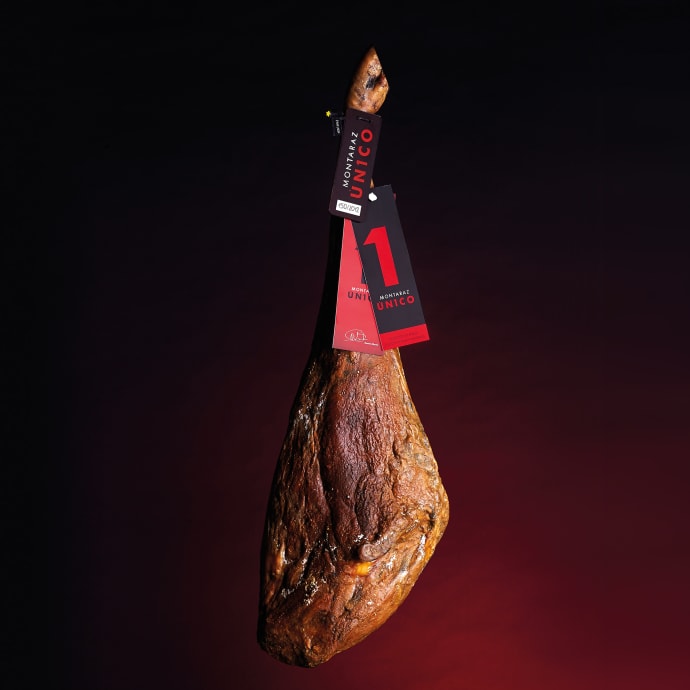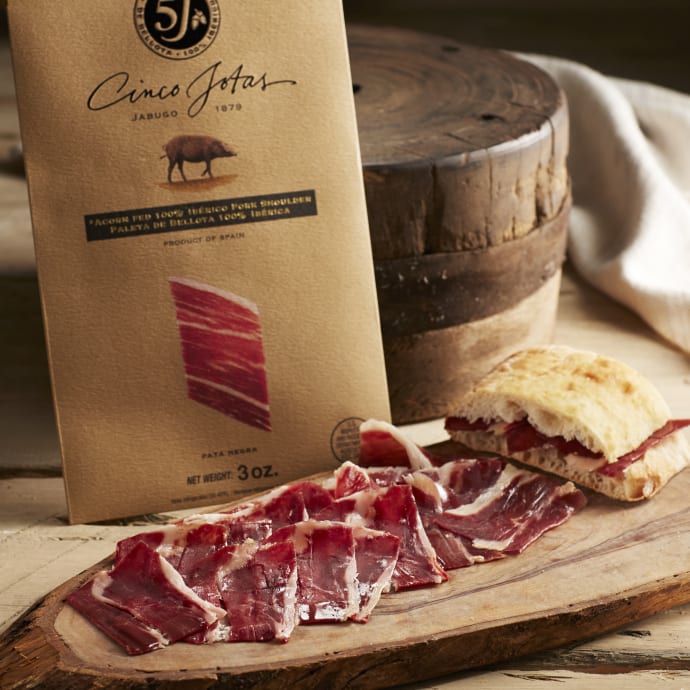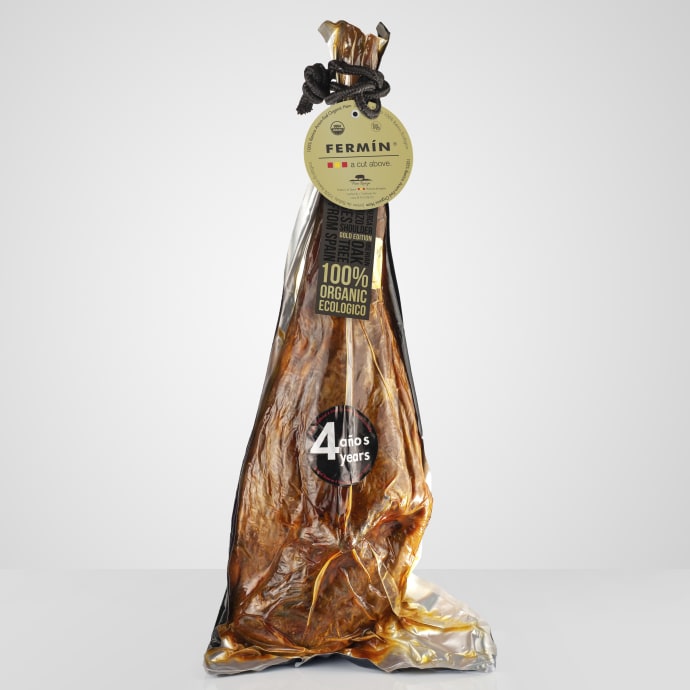Savoring the elusive bellota ham, soon to be legal in the U.S.
Raymond Sokolov
Next month, restaurants across the U.S. will at last be able to serve the world's best and costliest cold cut -- legally, that is -- for an expected $50 or so a plate.
Anyone with the time and the euros has been able to fly to Spain and taste jamon iberico de bellota, the aged, acorn-fed ham of black-footed pigs. But here in food-fearing America, official approval for this glistening, fat-streaked delicacy dragged on. At one Manhattan tapas bar, the owner offered contraband portions of bellota and even advertised the ham on his Web site -- until U.S. Customs nabbed one of those precious porcine back legs. That forced the owner to get in line with Mario Batali and other high-on-the-hog restaurateurs who await bellota's legal entry into the country as early as next week.
Spain's bellota ham, from pigs that dine on acorns, will finally be available in the U.S.
Early adopters who sent a deposit of $199 to LaTienda.com, an Internet source for imported Spanish delicatessen, will be billed the balance of the approximate total charge of $1,500 for a single bellota ham. The Web shipper calculates that will work out to about $96 a pound, or $6 an ounce.
Eager for a taste, I paid a visit earlier this month to Casa Mono, Mr. Batali's inventive Manhattan tapas restaurant. Lacking the real thing, he apologetically served me the cured shoulder of a bellota porker, which became importable sooner than hams from the same animals. Bellota (Spanish for acorn) acquires its complex, profound flavor from the pigs' unusual diet as well as from the two to four years the hams are hung up to air-cure. (Unlike most American hams, bellota isn't smoked or subjected to heavy doses of salt to cure it.) But even the bellota shoulder "ham" was pretty fabulous, or at least fabulous enough to get Molto Mario to sniff it like fine wine.
Both of us had tasted back-leg bellota ham in Spain, and we knew it had an even more elegant texture than the shoulder (paleta in Spanish). But I didn't trust my memory going back several years to a heavenly ham moment in Seville. So to get a jump on the bellota bandwagon, I found a source for the real thing right here in North America -- in Canada, which legalized the importation a few weeks before its lumbering cousin to the south.
I flew to Toronto to check it out. There, on Yonge Street, said to be the longest street in the world, I found a minimal but baroquely ambitious and up-to-date place called Cava. Cava is the name given to champagne-process sparkling wine made in Spain. Cava the restaurant serves an imaginative array of foods inspired by the small-plate dishes one might find in a Spanish tapas bar. The menu proudly lists the essential item in the traditional tapas menu, jamon serrano, the brilliantly hearty mountain ham that has been available in the U.S. for many years now. But Cava also has begun serving bellota, though as an off-the-menu special because of difficulties with supply.
Per Kristiansen for The Wall Street Journal
Toronto's Cava restaurant slices bellota ham to order.
Was it worth the trip? Well, I scored a taste scoop. A beautifully cut plate of translucent ham cost me 25 Canadian dollars (a little less than US$25). I didn't weigh it, but I would say I was served as much as four ounces, which I savored with a glass of manzanilla chosen from Cava's extensive sherry list. Since that is about half the expected U.S. price of a bellota serving I probably offset my travel expenses by $25.
This ham was not only glorious to behold, but it also had a truly astounding range of tastes, spanning the register from dark to light, and it challenged the tooth coyly. This meat was a "ham what am," Al Capp's highest praise for ham in his comic strip "Li'l Abner." But the ham the Yokum family ate in Capp's mythical Dixie hamlet of Dogpatch was something quite different, presumably a Southern country ham of the salty, rough-and-ready variety that aficionados like me gobble down with redeye gravy. By contrast, jamon iberico de bellota is a miracle of low-sodium refinement coaxed from pampered pigs that range at leisure over wide swaths of land, munching acorns while their hindquarters swell.
You can see the result of all this languorous balanophagy (Greek for acorn-eating) on your plate. This is the only ham that has lacy lines of fat looping through the whole visual field of every slice. And the fat is what gives the ham its plush, porky flavor.
Cholesterol nannies will note that bellota's sole importer, Fermin, publishes a chart of "nutrition facts" that advertises 87.9 calories for a one-ounce serving, of which 55.2 calories are from fat, about half of it saturated. This is not your cardiologist's idea of health food.
Only a handful of corpulent hedge-fund managers are likely to manage a steady enough diet of bellota for it to be a health worry. But should you be searching for an excuse to eat more of it, just remember: Bellota is a shining example of sustainable agriculture. Spanish farmers let their pigs loose in oak forests to feed exclusively on acorns for the last three months of their lolling lives. And acorns, properly managed, are -- do I need to tell you? -- a renewable resource.
Read full article...

 BEST SELLER
BEST SELLER SHIPS FREE
SHIPS FREE SHIPS FREE
SHIPS FREE SHIPS FREE
SHIPS FREE SHIPS FREE
SHIPS FREE BEST SELLER
BEST SELLER SHIPS FREE
SHIPS FREE SHIPS FREE
SHIPS FREE







